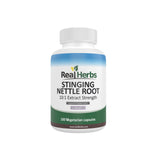What Is Gluten Intolerance And The Challenges It Poses To Health
People who cannot tolerate food with gluten have a condition called Celiac Disease. Celiac Disease is a hereditary disorder that can be managed by food choices but generally without a medical cure. People with this lifelong condition cannot tolerate foods with gluten. Once they ingest food with gluten content they are “glutened” and may suffer from headaches, diarrhea, stomach pains and lethargy. These series of symptoms may, therefore, lead to problems in nutritional absorption that can, later on, develop into malnutrition. The effects may vary from one person to another and can last for a few hours or even days. Having this condition can be very challenging in terms of the availability of gluten free foods.
So what really happens inside the gut of a person with celiac disease?
The Celiac Gut
In a normal small intestine, the villi, or the small projections lining the inner portion of the small intestine, increases the surface area for maximum nutrient absorption. In a person with celiac disease, the villi are not functional. Once a person with celiac disease ingests gluten foods, an immune-mediated reaction causes inflammation that blunts the villi. One cannot expect maximum absorption of nutrients once the villi are down. This inability to absorb nutrients can be very detrimental to growth health.
What is Gluten?
Gluten may sound toxic for people with celiac disease. The term “gluten” is a general term for the proteins stored in grains. The proteins in wheat, rye, barley, oats, corn and rice are slightly different from each other. The “gluten” in wheat, rye barley and a small amount of oats have a specific amino acid that is harmful to persons with celiac disease. The damaging “proteins” stimulate the T-cells to produce antibodies that attack and damage the villi of the small intestines. It is important to note that rice and corn do not contain damaging proteins and are safe for intake by people with celiac disease.
What is a Gluten-Free Diet?
A gluten free diet is the diet option for people with celiac disease. This diet helps them control their symptoms and prevent complications. A gluten-free diet may exclude barley, rye, wheat, and triticale ( a cross between wheat and rye). Always remember that there are food, drinks and seasonings that are derived from the gluten rich food mentioned like malt (from barley) flavourings and malt vinegar. This is why extra caution is necessary especially when ordering food outside. Although it can be frustrating at first, people with celiac disease will soon discover that patience and creativity will allow them to enjoy a gluten free diet.
Be wary of those labels from the supermarkets that say “wheat free” because they are not necessarily “gluten free”.
Below are the foods that are naturally gluten-free:
- Rice
- Cassava
- Soy
- Potato
- Beans
- Buckwheat groats
- Amaranth
- Teff
- Flax
- Chia
- Gluten - free oats
- Quinoa
- Tapioca
- Arrowroot
- Sorghum
It is good to know that there are already gluten free substitutes that are available in the market nowadays. Patients with celiac disease may never enjoy the traditional pasta, bread and other baked goods. However, there are gluten-free options that use alternative grains that can be purchased from specialty health stores. If you want to be sure, you can always bake your own gluten-free bread with gluten free flour and avoid the risk of ingesting gluten.
Fruits and vegetables are naturally gluten-free, so people with celiac disease can load up on this. Most beverages are gluten free EXCEPT beer, ales, malts and malt vinegar. However, nowadays, you can always find a gluten free beer, especially in the United States.
Some medicines and vitamins are not gluten-free. Therefore, it is very crucial to read the label before taking one. People with celiac disease may also refer to their physician before taking any vitamins and supplements. The risk of not getting enough vitamins from a gluten free diet is also possible. So it would be best to seek the help of a dietician to help you manage your diet and still get enough of the needed vitamins and minerals.
So, what does it means to be gluten-free? It is a challenging journey for people with celiac disease. If not properly managed, these people will die a slow death from malnutrition because of the inability to absorb nutrients by the villi of the small intestine. For the longest time, a gluten-free life was boring to lonely. This time, everybody including non-celiac patients can enjoy a gluten free life without the feeling of loneliness and deprivation from the delicious foods with gluten.
Remember that there are numerous food and drink options for celiac patients. Adhering to a strict gluten-free diet is the best way to conquer celiac disease.
References:
Anon, (2016). [online] Available at: http://www.mayoclinic.org/healthy-lifestyle/nutrition-and-healthy-eating/in-depth/gluten-free-diet/art-20048530?pg=1 [Accessed 6 May 2016].
WebMD. (2016). Celiac Disease-What Happens. [online] Available at: http://www.webmd.com/digestive-disorders/celiac-disease/celiac-disease-what-happens [Accessed 6 May 2016].
Gluten Dude. (2011). Celiac disease: A day in the life. [online] Available at: http://glutendude.com/eating-out/celiac-disease-a-day-in-the-life/ [Accessed 6 May 2016].
Corriher, S. (2016). Curing Celiac Disease Using Holistic Naturopathic Techniques - The Health Wyze Report. [online] Healthwyze.org. Available at: http://healthwyze.org/reports/148-curing-celiac-disease-using-holistic-naturopathic-techniques [Accessed 6 May 2016].
Celiac Disease Foundation. (2016). What Can I Eat? - Celiac Disease Foundation. [online] Available at: https://celiac.org/live-gluten-free/glutenfreediet/food-options/ [Accessed 6 May 2016].
Livehealthy.chron.com. (2016). The Importance of Villi and the Small Intestine to the Digestion of Nutrients. [online] Available at: http://livehealthy.chron.com/importance-villi-small-intestine-digestion-nutrients-3923.html [Accessed 6 May 2016].












